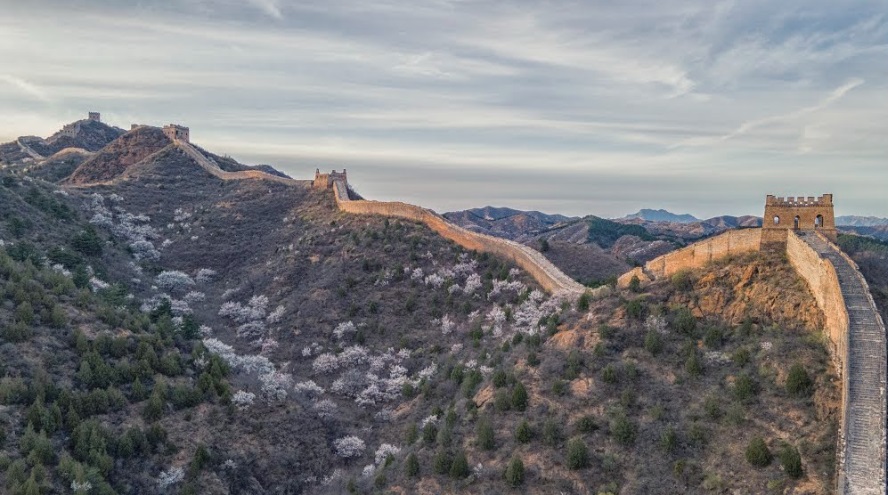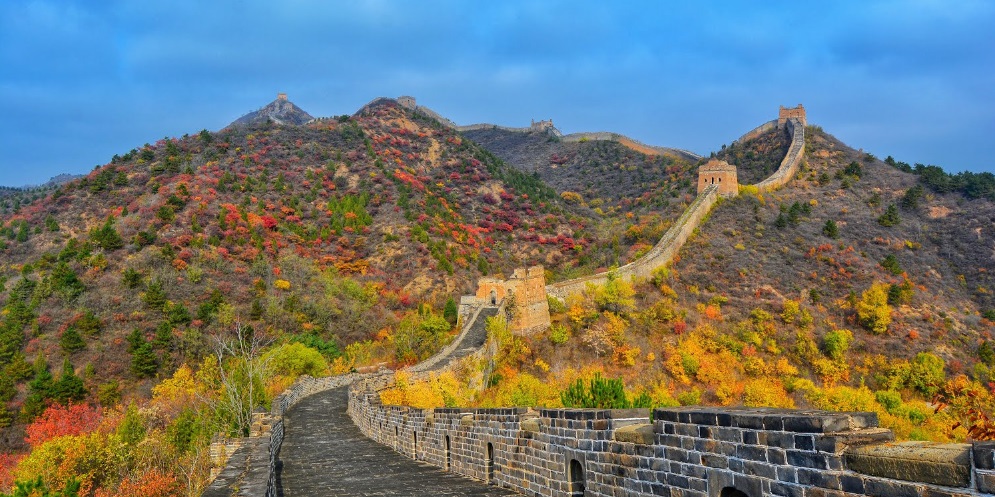Numerous structures and edifices are available to prove human’s great efforts. The remarkable builds and designs from ancient Egypt, Greek, Inca and India are always fascinated with stories and realities. What we took it from China? What is one of China’s most incredible structures that make a nation icon? The Great Wall of China is the most astonishing human effort and design that plays a historical role in Chinese history and Culture.
The Great Wall is fortifications starting from the 7th century BC, and the Han (202 BC – 220 AD), the Northern Qi (550–574), the Jurchen-ruled Jin (1115–1234), and mainly the Ming (1369–1644) have significantly contributed to the Great Wall. Each dynasty rebuilt, re-manned, and expanded the Walls in these periods.

Wu Qiang | credit: Google Art and Culture
Ten Things about the Great Wall Of China
1) The Great Wall is the largest man-made project in the world, stretching 20,000 km in length.
2) There are 15 strategic passes in this remarkable Wall and 15 geographically important passes built along the route.
3) It takes over 2,000 years to construct the Wall
4) The Great China Wall is not a wall but a series of fortifications
5) Materials from different locations used to build: bricks and cut stone blocks.
6) Shanhai Pass, known as “First Pass under Heaven”, is the first pass in east China, a strategic location.
7) Significant element is some of the workers from left imprints on the bricks by their names.
8) Now Great Wall is considered China’s outstanding Achievement and cultural icon
9) It is the feast of engineering and design.
10) This Great Wall winds up and down across mountains and plateaus like a dragon.
The design aspect of the Great Wall of China
Dragon is the cultural icon of China. In every element, dragons make a move into Chinese history and Culture. The Great Wall of China is also part of this dragon motif. In 1984, Chinese Deng Xiaoping launched a campaign to protect the Great Wall from demolition. Chinese authorities realised the destruction happens to the Great identity of a country within a few periods. Why is this Wall called great; not only because of the length but also because of the great efforts and enthusiasm behind this incredible construction.
In a book titled, ‘The Great Wall of China: From History to Myth, Arthur Waldron writes about the Great Wall of China and the significance of the Wall. ‘We one does that, certain fundamental, and I think insurmountable, problems with the ordering concept of “The Great Wall “itself become evident. Then, rather than somehow attempting to fit recalcitrant evidence into it, I have chosen to discard the concept. The fundamental conviction that has emerged from my research is that the idea of a Great Wall of China, a familiar to me since childhood and with which I began my work, is a historical myth, writes Arthur.
According to Arthur, the origins and growth of the Great Wall tell about China and the West. Why the Great Wall is constructed answers the defence system and authoritarianism questions. How this ‘Wall’ becomes a myth of modern China, a country with a great history of making a ‘Great Wall’?
The Great Wall is not an artwork or not similar kind of the Taj Mahal or the Pyramid; more significant than these living icons of Chinese history and thought. ‘When, however, in the twentieth century, China began to discard the institutions and the Culture that had served s her national definition earlier ages, this largely Westen notion of the Great Wall of China was reintroduced, quite unconsciously it appears, in the role of national symbol, write Arthur.
Where can we find more information about the Great Wall of China, especially in their cultural heritage? The creation of the Wall was essential at that time. And hence, how can this construction become a country’s national icon? The Wall became the folk culture of China a very long before, and song of the military people and their windowed wives are available in abundance in Chinese folklore.

Krispin Joseph PX, a poet and journalist, completed an MFA in art history and visual studies at the University of Hyderabad.





